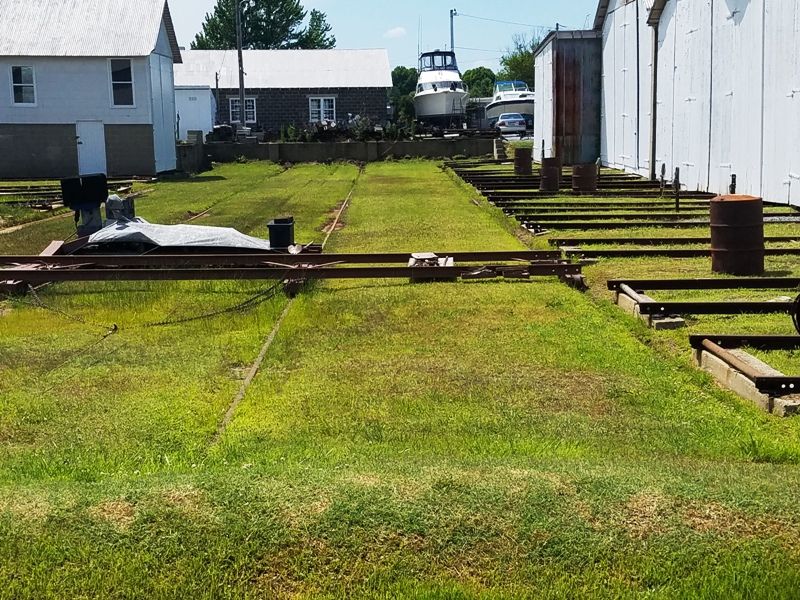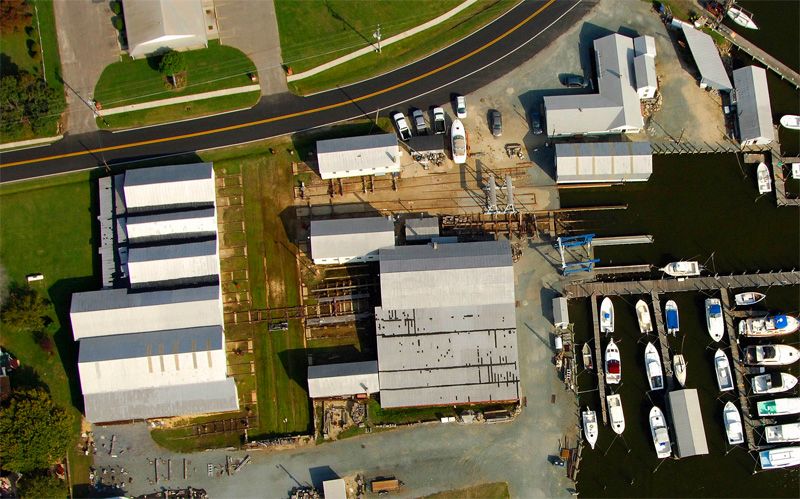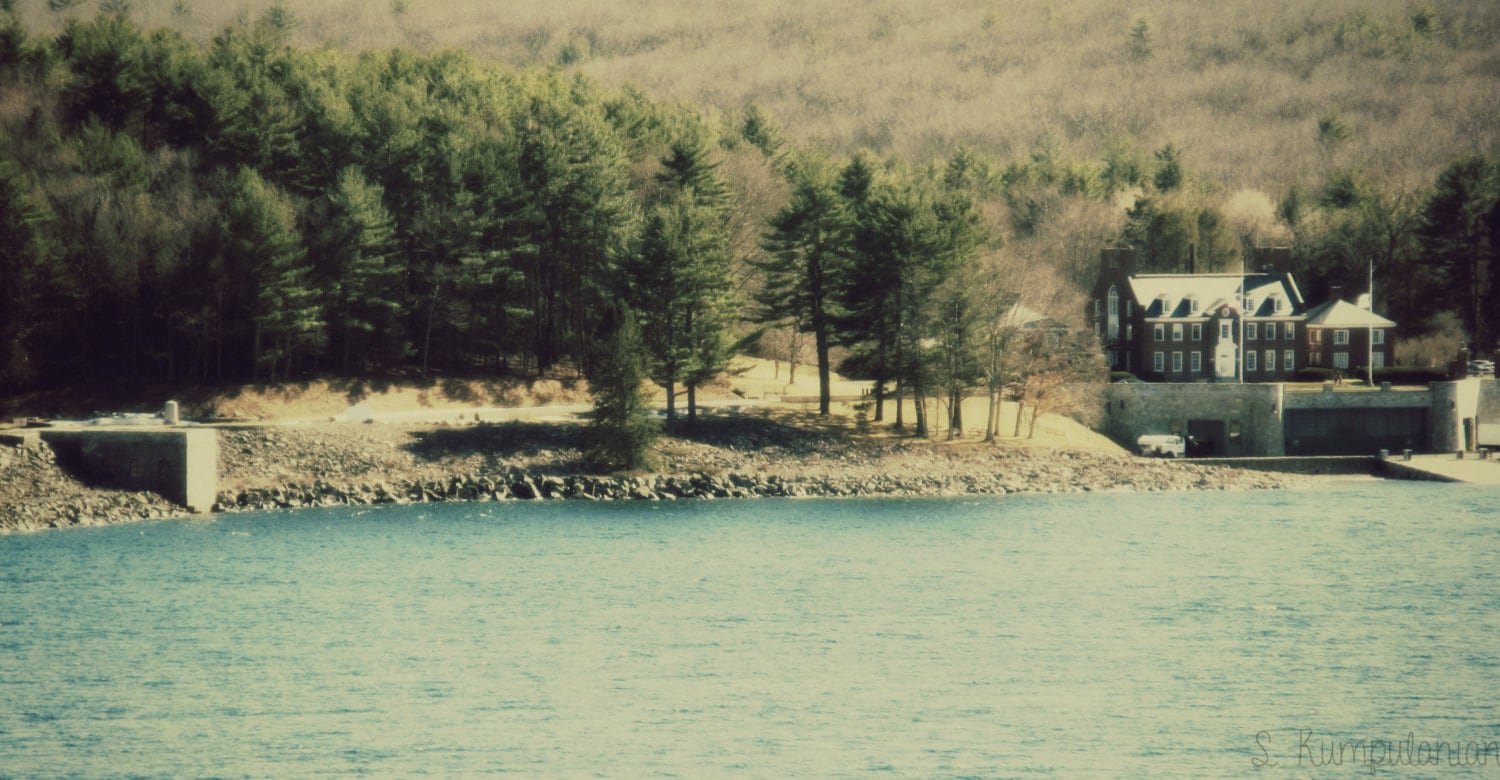You may have heard of a marine railway, where the rails run into the water and there is a wheeled frame on to which a boat can be moved and the whole thing winched out of the water. Here’s a small boat on a typical one.

I caught this shot from a moving trolley in Rock Hall, MD, on Monday.

This is the landward end of the railway - on the left is the track down in to the water. What amazed me was the row of sheds and tracks on the right. The transfer table on its rails lets you haul a boat out, moce the whole carriage opposite a shed, and roll the boat into the shed to work on it. Or vice versa.
Here’s an overhead of the railway layout. It looks as if they lift boats out with the travelling crane (2 grey units straddling the track) and drop them on a carriage. Probably because rails in the water need a lot more maintenance!

Most elaborate marine railway I’ve ever seen.
